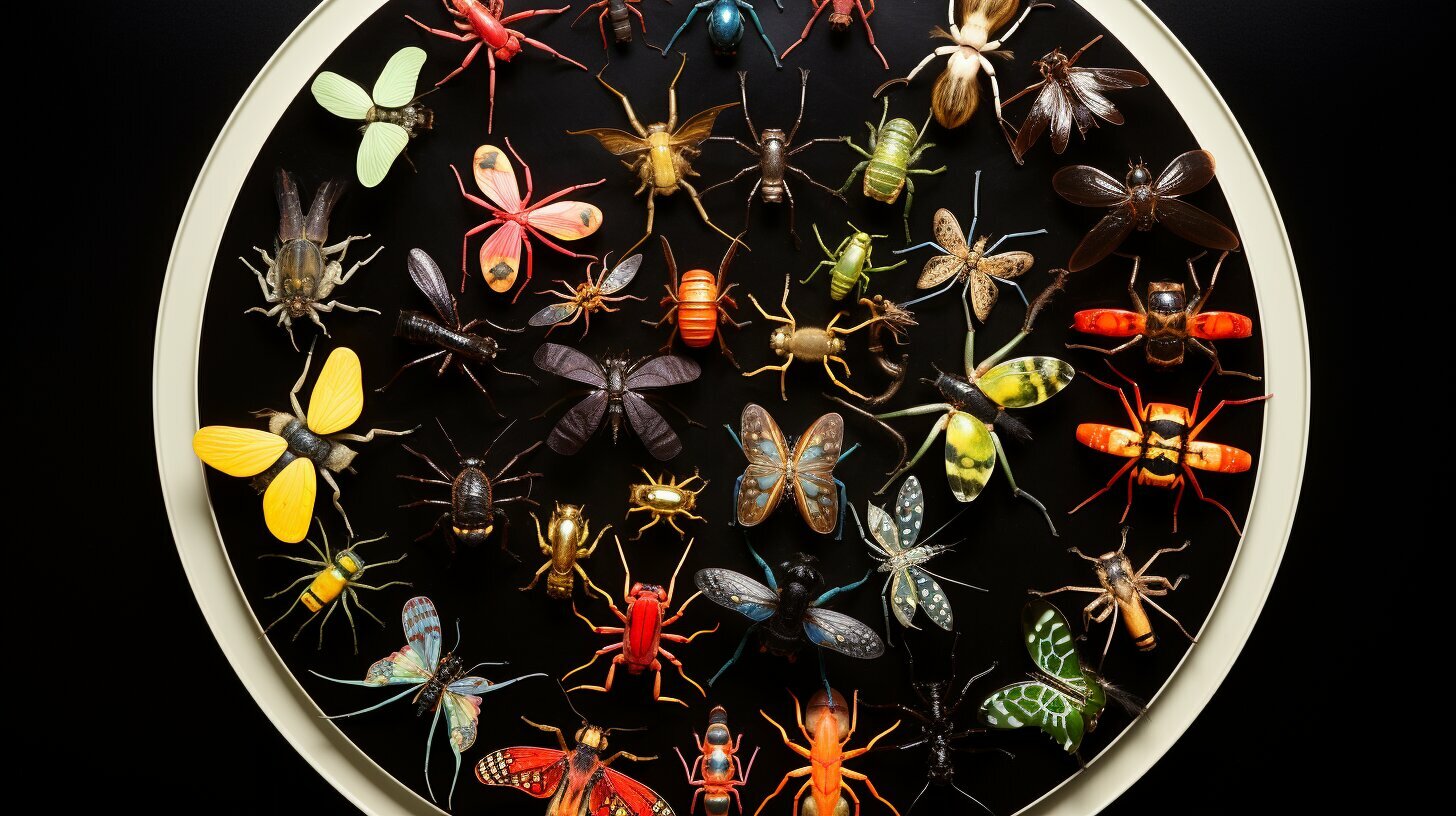When it comes to survival, knowing which natural resources to utilize can make all the difference. Insects, often overlooked as a food source, can provide vital nutrients and sustenance in challenging circumstances. In this guide, we’ll explore the world of edible bugs for survival and how to incorporate them into your outdoor culinary adventures.
Not only are edible insects abundant in the wild, but they are also highly nutritious, providing essential proteins and minerals that can supplement your diet when other food sources are scarce. From identifying and foraging for edible bugs to preparing and cooking them safely, this comprehensive guide will equip you with the knowledge and skills to thrive in the great outdoors.
Key Takeaways
- Edible bugs can be a valuable source of nutrition in survival situations.
- Insects are highly abundant in the wild and offer a diverse range of species to explore.
- Proper identification, foraging, and preparation techniques are essential for safely incorporating insects into your diet.
- Bug eating has cultural and historical significance around the world.
- Insect consumption can contribute to sustainable food production and reduce ecological impact.
Understanding Insects as a Food Source for Survival
When it comes to survival situations, finding a reliable food source is crucial. While hunting and fishing may seem like the obvious option, insects are a valuable and often overlooked food source in the wild.
Insects as a food source for survival, also known as entomophagy, have been utilized by various cultures for centuries.
Disclosure: When you buy through links on our site, we may earn an affiliate commission.
Not only are insects abundant in many environments, but they are also high in nutrients such as protein, vitamins, and minerals. In fact, some insects contain as much as three times more protein than beef per gram!
Furthermore, insects provide a sustainable food source that requires minimal resources and has a low environmental impact. As traditional livestock farming practices continue to contribute to deforestation and greenhouse gas emissions, the prospect of insect consumption as a viable alternative is gaining momentum.
While the idea of eating insects may seem unappetizing to some, it’s important to consider the nutritional benefits and practical advantages of bug-eating when faced with survival scenarios. Knowing how to identify and prepare edible insects can make a significant difference when it comes to ensuring your survival in the wild.
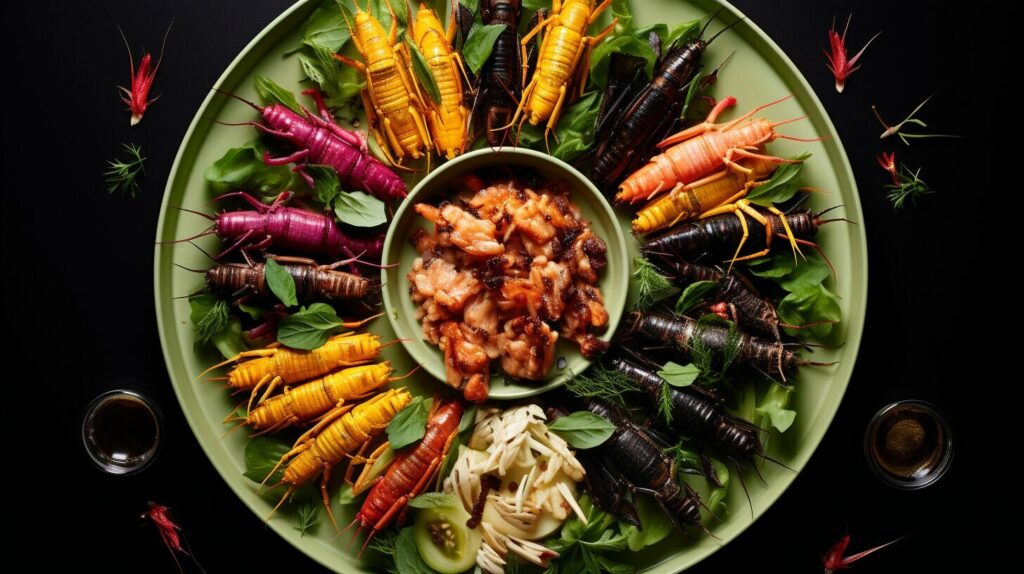
Benefits of Insects as a Food Source for Survival
| Nutrient | Cricket (per 100 grams) | Beef (per 100 grams) |
|---|---|---|
| Protein | 21.2g | 26.1g |
| Fat | 5.5g | 19.5g |
| Iron | 6.5mg | 2.6mg |
| Calcium | 75.8mg | 3.0mg |
The table above showcases the nutritional value of crickets compared to beef. As you can see, crickets contain a similar amount of protein and significantly lower levels of fat, while also providing higher levels of iron and calcium.
Furthermore, insects can provide essential nutrients when other food sources are scarce. In survival situations where hunting and fishing may not be possible, foraging for edible insects can be a valuable alternative.
As you navigate the challenges of survival in the wild, it’s important to know how to utilize all available resources. With their abundance, nutritional benefits, and sustainability, insects are a food source worth considering.
Identifying Edible Bugs in the Wild
Foraging for edible bugs is a critical survival skill that involves identifying and locating insects in their natural habitats. Knowing where to find edible bugs is essential to ensure a reliable source of nutrition in the wild. Here are some essential tips on how to find edible bugs in the wild:
- Look for insects in areas with diverse plant life, as this is where insects thrive.
- Check underneath rocks, logs, and other natural objects where insects tend to hide.
- Visit bodies of water such as streams, rivers, and lakes where water-dwelling insects such as dragonflies and beetles can be found.
- Observe nature and look for signs of insect activity such as chewed leaves or insect nests.
- Use a bug net or trap to capture insects without harming them.
It is crucial to identify and avoid poisonous or harmful insects to prevent illness or injury. Take the time to research and learn about different species of insects and their characteristics. When in doubt, err on the side of caution and avoid consuming an insect if you’re uncertain of its safety.
To help you identify edible bugs in the wild, refer to the following table:
| Insect | Location | Description |
|---|---|---|
| Grasshoppers | Grasslands, open fields, meadows | Long legs, large and strong hind legs, brown or green color |
| Crickets | Grassy areas, forests | Long antennae, robust body, chirping sound |
| Ants | Nests in soil or wood | Small size, black or red color, acidic taste |
| Worms | Soil or decaying organic matter | Soft and slimy texture, cylindrical shape, pink or brownish color |
Remember that bug foraging can be a fun and rewarding outdoor activity when done safely and responsibly. By understanding where and how to find edible bugs, you can expand your culinary horizons and increase your chances of survival in the wild.
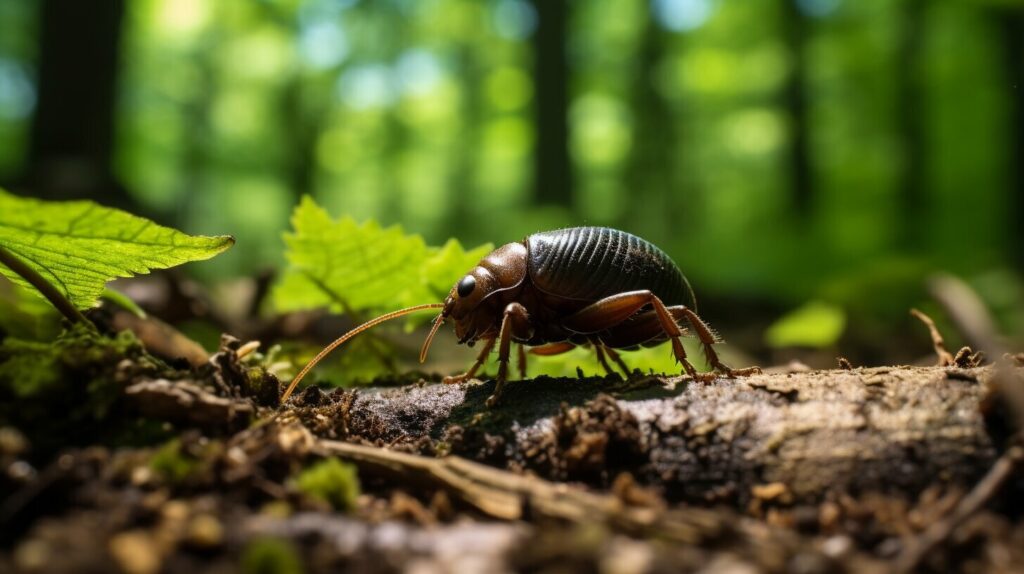
Popular Edible Bugs for Survival
When it comes to edible bugs for survival, it’s important to know which species are safe for consumption. Here are a few popular edible bugs that are rich in nutrients and easy to prepare:
| Bug | Taste | Preparation Method |
|---|---|---|
| Grasshoppers | Nutty and earthy | Fry them in oil or roast them over a fire |
| Crickets | Nutty and slightly sweet | Bake or roast them in an oven |
| Ants | Tangy and acidic | Eat them raw or cook them in a stir-fry |
| Mealworms | Nutty and slightly creamy | Pan-fry them with garlic and seasonings |
These popular edible bugs are high in protein, fiber, and a range of vitamins and minerals that can fuel your body in survival situations. Plus, they can add some much-needed variety to your outdoor culinary adventures!
Looking for bug recipes for survival? Check out this delicious protein-packed cricket energy bar recipe:
- Puree 1 cup of dates, 1/4 cup of honey, and 1/2 cup of peanut butter in a food processor.
- Add 1/2 cup of cricket powder and 1/4 cup of chopped almonds to the mixture.
- Pulse until the ingredients are well combined.
- Line a square baking dish with parchment paper and transfer the mixture to the dish.
- Use a spatula to spread the mixture evenly in the dish.
- Refrigerate for at least 30 minutes.
- Cut into bars and enjoy!
Bug cuisine for outdoor survival doesn’t have to be bland or unappetizing. With a little creativity and some simple techniques, you can prepare delicious and nutritious meals using edible bugs.
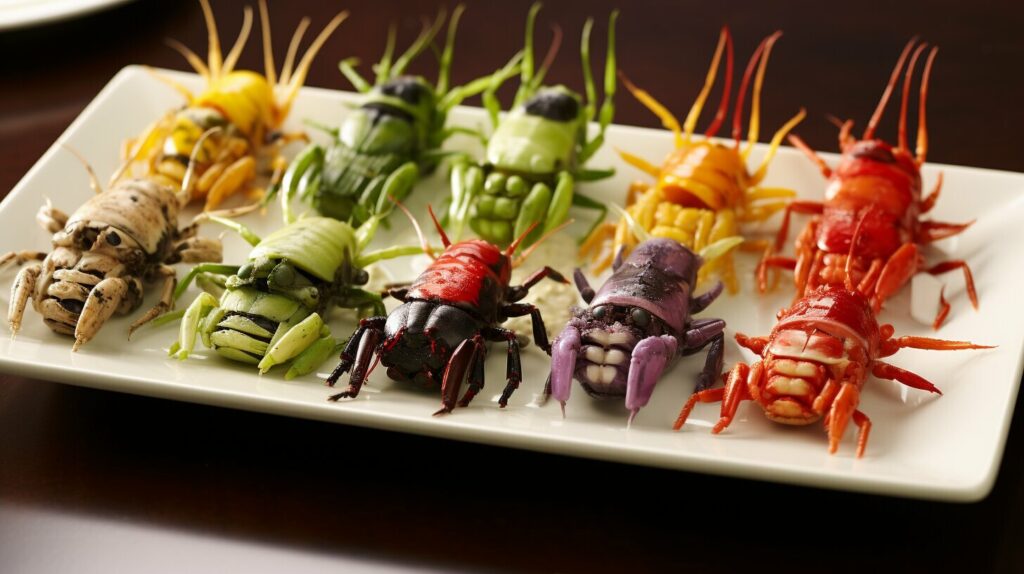
Nutritional Value of Edible Bugs
When it comes to survival situations, insects can provide a significant source of protein, vitamins and minerals to sustain your body’s needs. Insects are highly nutritious and can offer a variety of health benefits that other food sources can’t provide. This section will delve into the nutritional value of edible bugs, including the protein content, vitamins and minerals found in various bug species.
The Protein Content of Edible Bugs
Edible insects are an excellent source of protein, supplying all essential amino acids needed by the body. In fact, they often have higher protein content than traditional livestock like beef or chicken. For example, mealworms contain 25 grams of protein per 100 grams, while beef only contains 22 grams of protein per 100 grams. Crickets, another popular edible bug, contain around 21 grams of protein per 100 grams.
Insect protein is also more environmentally friendly than traditional livestock farming, as it requires significantly less water, land and feed to produce the same amount of protein.
Vitamins and Minerals Found in Edible Bugs
Edible insects are also rich in various vitamins and minerals that are essential for proper bodily function. For example, crickets contain high levels of calcium, iron and zinc, all of which are vital for maintaining healthy bones, oxygen transport and immune function. Some species of insects, such as mealworms, are rich in vitamin B12, which is crucial for neurological function and the formation of red blood cells. Fortified cereals and animal products are the primary sources of vitamin B12 but are not always available in a survival situation.
By incorporating edible bugs into your diet, you can provide your body with a diverse range of essential vitamins and minerals, helping to ensure your well-being in challenging outdoor environments.

Safety Precautions and Preparation Techniques for Edible Bugs
When it comes to bug eating for survival, safety should always be the top priority. Even though edible insects can provide vital nutrients and energy in extreme situations, consuming the wrong type of insects or handling them improperly can lead to illness or even death.
Before you start foraging for bugs in the wild, it’s essential to educate yourself on the types of insects that are safe to eat and those that are not. Avoid insects that have vibrant colors or strong odors, as these can be an indication of toxicity. Stick to insects that you can positively identify, and if there’s any doubt, refrain from consuming them.
Once you have found safe and edible bugs, it’s vital to prepare them correctly to minimize any risks. Here are some critical safety precautions and preparation techniques that you should follow:
- First, clean the insects thoroughly by washing them with water. You can also soak them in saltwater or vinegar solution to remove any dirt or debris.
- If you plan to eat the insects raw, ensure that they are fresh, healthy, and have been handled properly. Avoid consuming raw insects that you’ve caught in the wild unless you’re confident about their safety.
- Cooking is the most effective way to eliminate any harmful bacteria, parasites, or viruses present in insects. Boiling, frying, or roasting insects are popular cooking methods. However, cook the insects thoroughly to an internal temperature of at least 165°F.
- Some people prefer to dehydrate insects for extended storage or for use in recipes. If you want to dehydrate insects, ensure that you dry them at the correct temperature and time, and store them in a dry and sealed container.
When it comes to bug cuisine for outdoor survival, it’s essential to approach bug eating with an open mind and follow the necessary precautions to ensure that you and your companions stay safe and healthy. By learning about the types of edible insects, how to prepare them, and how to avoid any potential risks, you’ll be equipped with the skills and knowledge necessary to incorporate bug eating into your outdoor culinary adventures.
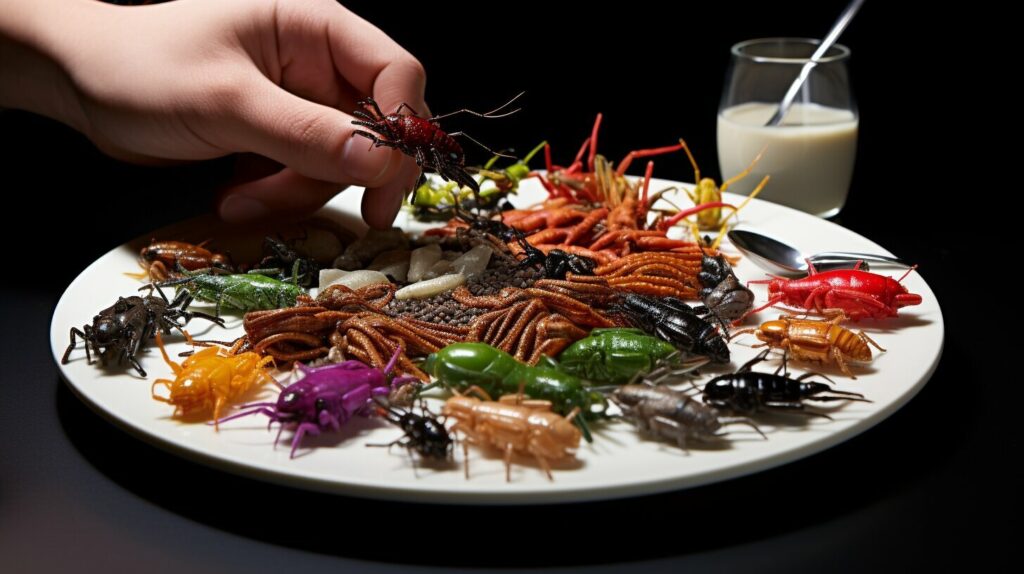
Bug Eating Around the Globe
While bug eating may not be a common practice in some parts of the world, many cultures have embraced entomophagy as a valuable and sustainable food source for survival.
In Mexico, chapulines (grasshoppers) are a popular snack, often consumed with guacamole or as a crunchy addition to tacos. In Thailand, fried crickets are a common street food, while in Japan, silkworm pupae are often served as a high-protein snack.
Some African tribes have a long history of eating termites and ants, while in Australia, the Aborigines consume witchetty grubs, a species of moth larvae.
Even in the Western world, bug eating is gaining popularity as a sustainable and nutritious food option. Some high-end restaurants have incorporated insects into their menus, offering dishes such as cricket flour pasta or mealworm burgers.
The Benefits of Bug Eating
Bug eating offers numerous benefits, from environmental sustainability to enhanced nutrition. Insects are a highly efficient source of protein, requiring less land and water resources than traditional livestock farming.
Furthermore, many edible bugs contain essential vitamins and minerals, including iron and calcium, that are important for maintaining overall health.
By embracing bug eating as a viable food source, you can enhance your survival skills and contribute to sustainable food production.
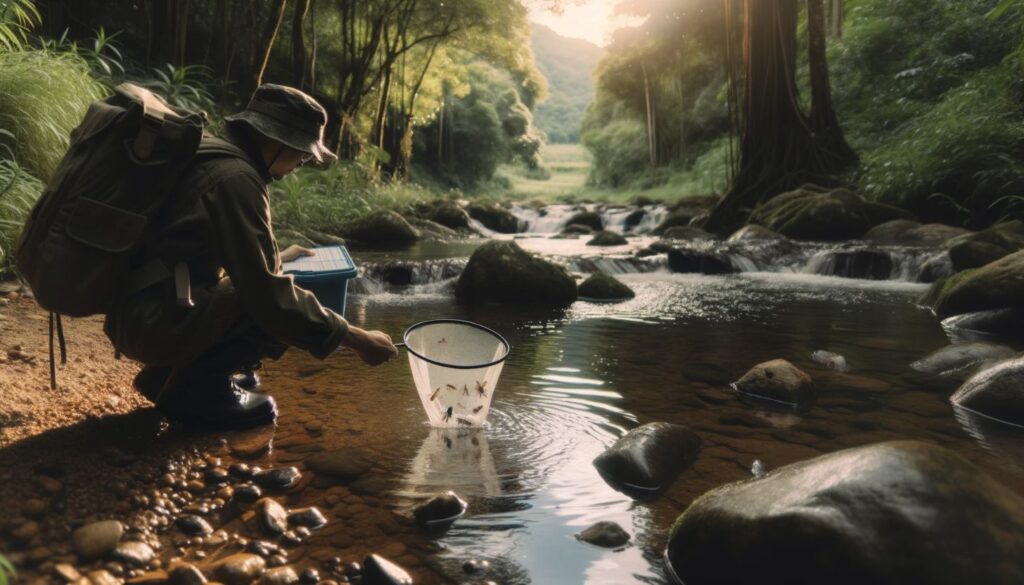
“The practice of eating insects is called entomophagy, and it’s a survival skill that has been utilized by humans for thousands of years.”
Edible Bugs and Environmental Sustainability
When it comes to survival, incorporating insects into your diet not only benefits your nutrition but also the environment. Insects are a highly sustainable source of food that can reduce the ecological impact of traditional livestock farming. Let’s explore how insect consumption can contribute to environmental sustainability.
Reduced Greenhouse Gas Emissions
Compared to conventional livestock farming, insect farming produces significantly lower greenhouse gas emissions. Insects such as crickets, mealworms, and ants emit fewer greenhouse gases and require less water and land to produce the same amount of protein as traditional livestock like cows and pigs.
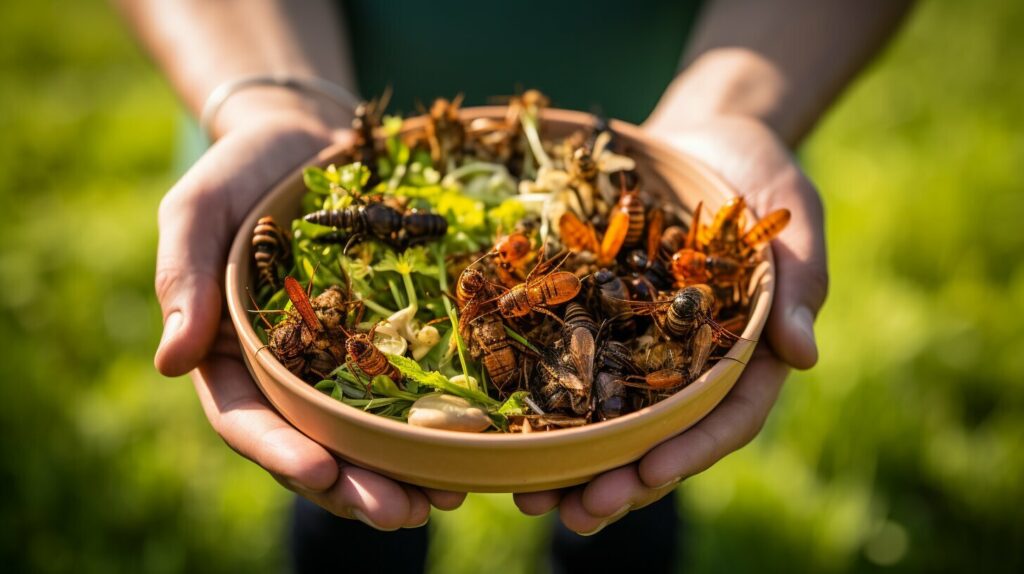
Minimized Ecological Impact
Traditional livestock farming has a significant ecological impact, including deforestation, water pollution, and habitat loss for wildlife. In contrast, insect farming can be done on a much smaller scale, requiring less land and water. Additionally, some edible insects such as mealworms can even be farmed on food waste, reducing the overall environmental impact.
Sustainable Food Production
The demand for food is increasing globally, and traditional livestock farming is not sustainable in the long run. Insects are a highly sustainable food source that can provide the necessary proteins and nutrients while minimizing the environmental impact. Additionally, insects can be farmed year-round, making them a stable food source even in times of drought or other environmental challenges.
By incorporating insects into your diet, you are making a sustainable choice that benefits not only your survival but also the planet. Edible bugs are an environmentally friendly option that can support your nutritional needs while reducing the ecological impact of traditional food production methods.
Overcoming Mental Barriers to Bug Eating
Many people have reservations about consuming insects, but in survival situations, bug eating can be a crucial source of nutrition. By understanding the benefits of entomophagy, you can begin to overcome mental barriers and incorporate edible bugs into your survival diet.
One common concern is the perceived ickiness of consuming insects, but once you realize that many cultures around the world have been eating bugs for centuries, it becomes easier to accept them as a viable food source. In fact, insects are often considered a delicacy in some countries and are enjoyed for their flavor and nutritional value.
Another barrier is the fear of eating something potentially dangerous. However, it is important to learn how to properly identify edible bugs in the wild and understand the necessary safety precautions for consuming them. Additionally, many species of insects that are safe for human consumption are readily available for purchase from reputable sources.
If you are still hesitant about bug eating, consider starting small by incorporating them into your diet in a more familiar form, such as incorporating cricket powder into baked goods or adding mealworms to a stir-fry. As you become more comfortable, you can work up to trying more adventurous bug dishes.
Remember that bug eating is a survival skill worth mastering. By overcoming mental barriers and embracing entomophagy, you can increase your chances of survival in challenging environments.
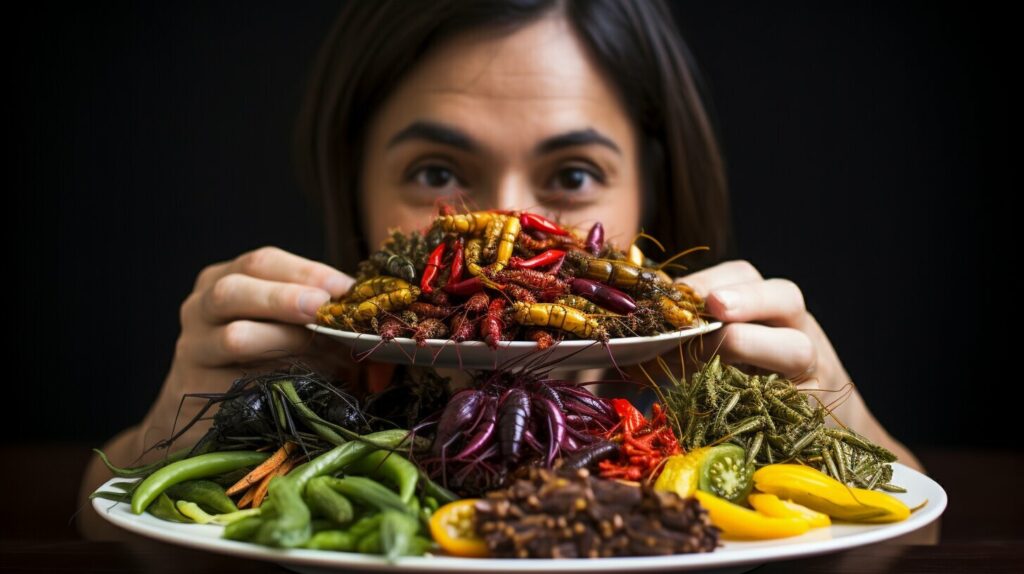
Source: https://cdn.pixabay.com/photo/2021/07/07/10/53/insect-6393713_1280.jpg
Bug Eating for Long-Term Survival
When it comes to long-term survival in the great outdoors, it is essential to have a diverse and balanced diet to meet your nutritional needs. Insects are a valuable addition to any survival diet as they are packed with essential proteins and nutrients.
Edible insects for survival can provide a reliable and sustainable food source for an extended period of time. Bugs reproduce quickly and require minimal resources, making them a cost-effective and eco-friendly option for outdoor survival.
When preparing bug cuisine for outdoor survival, it is important to diversify your insect sources to ensure a complete nutritional profile. Different edible bugs contain varying amounts of protein, fat, and carbohydrates, as well as important vitamins and minerals.
| Bug Type | Protein (per 100g) | Fat (per 100g) | Carbohydrates (per 100g) | Vitamin Content | Mineral Content |
|---|---|---|---|---|---|
| Grasshoppers | 20.6g | 6.1g | 3.5g | Vitamin B12, Iron, Zinc | Calcium, Magnesium |
| Crickets | 21.8g | 5.5g | 1.2g | Vitamin B12, Iron, Zinc | Calcium, Magnesium |
| Mealworms | 24.6g | 13.2g | 2.3g | Vitamin B12, Iron, Zinc | Calcium, Magnesium |
| Ants | 13.9g | 3.9g | 4.5g | Vitamin C | Calcium, Iron |
As shown in the table above, different bugs provide different nutritional benefits. Experiment with different bug eating techniques and recipes to find a variety of edible insects that work for you.
It is also important to note that while bugs can provide a reliable food source, they should not be the sole source of sustenance for long periods of time. A diverse diet that includes other food sources, such as plants and small game, is crucial for long-term survival.
By incorporating edible insects into your survival diet, you can increase your chances of staying healthy and nourished in the wild. Don’t be afraid to try new bug-eating techniques and experiment with different bug recipes. With the right knowledge and preparation, bug eating can be a valuable survival skill worth mastering.
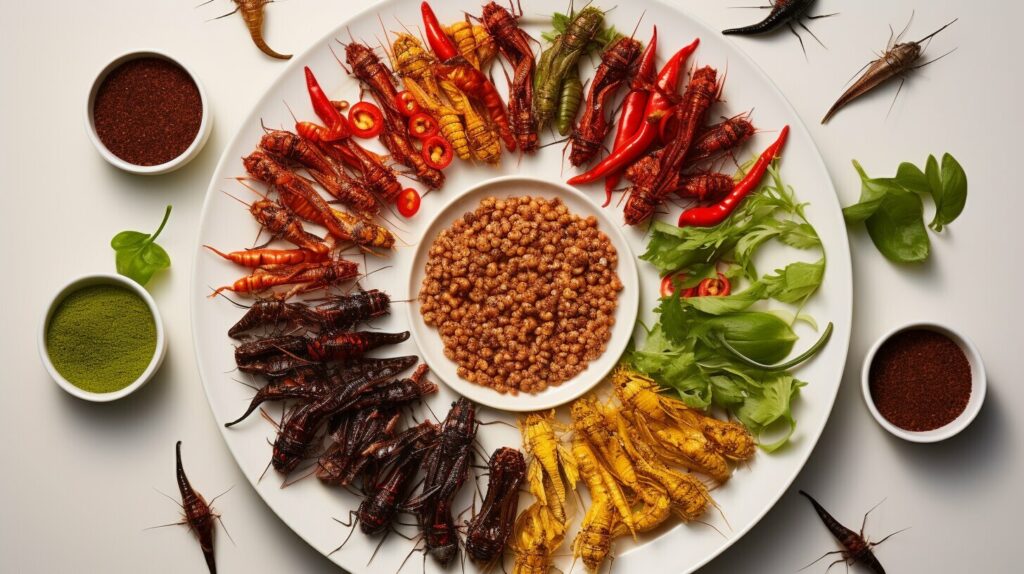
Bug Eating: A Survival Skill Worth Mastering
Preparing and consuming edible bugs is a crucial survival skill that can keep you alive during extreme situations in the wild. Knowing how to identify, catch, and cook bugs can provide you with a valuable source of protein and other essential nutrients when other food sources are scarce.
One of the key aspects of bug eating is knowing how to forage for them in the wild. This means understanding their habitats, life cycles, and preferred food sources. By developing these skills, you can increase your chances of finding edible bugs in the wild and avoid harmful species that could make you sick.
Another important aspect of bug eating is understanding the concept of entomophagy. This is the practice of consuming insects as food, which has been a part of many cultures throughout history. By embracing this practice, you can not only improve your survival skills but also develop a deeper appreciation for the nutritional and environmental benefits of bug consumption.
It’s important to keep in mind that consuming bugs can be risky if not done properly. Some species contain toxins that can cause illness or even death, so it’s essential to learn how to properly clean and cook them to minimize risk. Additionally, it’s important to start with small quantities of bugs and gradually increase your intake to avoid digestive issues.
Despite these potential challenges, mastering bug eating as a survival skill can provide you with a valuable source of nutrition and a deeper connection to the natural world around you. With practice, you can become comfortable and confident in your ability to catch, cook, and consume edible bugs in any survival situation.
Tips for Bug Foraging in the Wild
Here are some tips to help you successfully forage for edible bugs in the wild:
- Learn about the habitats and food preferences of different bug species
- Pay attention to the time of day and weather conditions when looking for bugs
- Look for signs of bug activity, such as chewed leaves or discarded exoskeletons
- Use a net or jar to capture bugs without harming them
- Avoid areas that may be contaminated with pesticides or other harmful chemicals
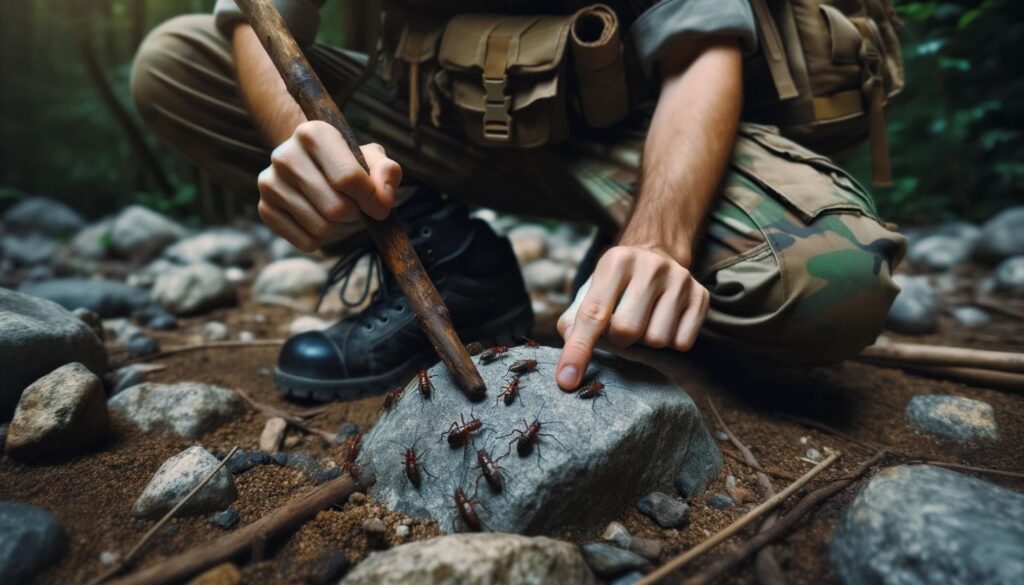
“By embracing bug eating as a survival skill, you can develop a deeper appreciation for the nutritional and environmental benefits of bug consumption.”
Conclusion
Incorporating edible insects into your diet can be a highly valuable survival skill. Bugs like crickets, grasshoppers, and mealworms are nutritious, abundant, and sustainable sources of essential proteins, vitamins, and minerals.
For successful bug eating, it is critical to properly identify edible species, employ safe harvesting and preparation methods, and overcome any hesitations. With the right knowledge and techniques, edible bugs can significantly enhance outdoor survival capabilities and resilience.
Bug eating connects us to nature, reduces environmental impact, and equips us with the ability to thrive when resources are scarce. Mastering entomophagy is a skill that can save lives in challenging circumstances. By embracing bug cuisine, we gain self-sufficiency, appreciation for sustainable food systems, and the ability to survive and thrive in the wilderness.
FAQ
What are the nutritional benefits of consuming edible bugs?
Edible bugs are packed with essential proteins, vitamins, and minerals, making them a valuable source of nutrition in survival situations.
How do I identify edible bugs in the wild?
Bug foraging requires knowledge of signs and habitats. Learn about the common edible bug species and how to spot them in their natural environments.
Are there any safety precautions when consuming edible bugs?
Yes, it’s important to properly clean, cook, and prepare edible bugs to minimize the risk of foodborne illnesses. Learn the necessary safety techniques for bug cuisine in outdoor survival scenarios.
Which bug species are popular and safe to consume in survival situations?
There are various edible bug species, such as mealworms, crickets, and grasshoppers, that are safe to eat and rich in nutrients. Discover different bug recipes and how to prepare these insects for consumption.
How can bug eating contribute to environmental sustainability?
Incorporating insects into your diet can promote sustainable food production, reduce greenhouse gas emissions, and minimize the ecological impact of traditional livestock farming.
What are some common misconceptions about bug eating?
Many people have concerns about the taste and safety of consuming bugs. Learn practical tips and strategies to overcome mental barriers and embrace bug eating as a viable and sustainable option for survival.
How can bug eating support long-term survival?
Bugs can provide a diverse and balanced diet in the wild, sustaining your nutritional needs over an extended period of time. Discover how to incorporate bugs into your long-term survival plan.
What is the cultural significance of bug eating around the world?
Bug eating has historical and cultural significance in many parts of the world. Explore different entomophagy practices and gain insights into how insects have been incorporated into diets for survival throughout history.
How can bug eating be considered a survival skill?
Insects possess resilience and adaptability, making bug eating a valuable survival skill. Learn how to hone your bug foraging skills to increase self-sufficiency in the wild.

